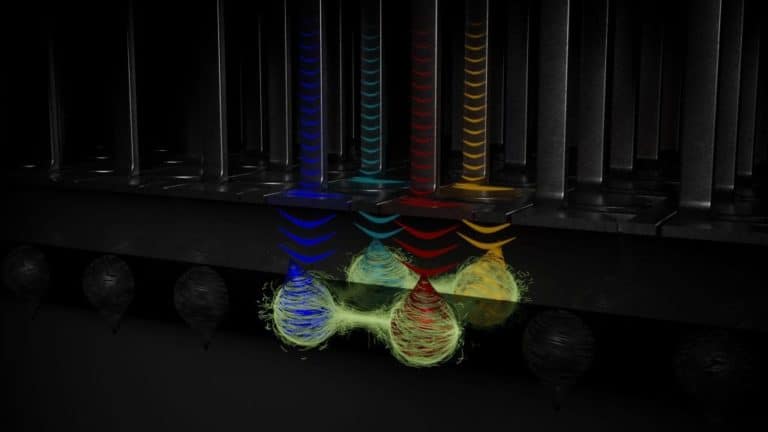Researchers at QuTech have built a quantum computer in which four qubits operate together in a grid. According to the researchers, this is an important step in making quantum computers scalable.
The research team was led by Menno Veldhorst from QuTech. QuTech is a collaboration between TU Delft and TNO, the Netherlands Organisation for Applied Scientific Research. The team shares its findings in a message on its website.
Scalability
QuTech’s research focused on the scalability of quantum computers. Whereas current quantum computers consist of a few dozen qubits, the intention is for there to be millions or even billions of qubits in the future. By bringing together four qubits as a kind of processor, the team proves that further scalability is possible. Up until now, researchers had not succeeded in creating a quantum computer with more than two qubits working together in a circuit.
Germanium
The QuTech researchers, therefore, decided to take a different approach. Using germanium with ‘holes’ of missing electrons, the groups of Menno Veldhorst and Giordano Scappucci managed to use the electrodes that were used to define the qubits, also to control and entangle them.
“No large additional structures have to be added next to each qubit such that our qubits are almost identical to the transistors in a computer chip,” says Nico Hendrickx, graduate student in the group of Menno Veldhorst and first author of the article. “Furthermore, we have obtained excellent control and can couple qubits at will, allowing us to program one, two, three, and four-qubit gates, promising highly compact quantum circuits.”
Doubling every year
The research team has managed to double the number of qubits in its systems every year since building its first quantum dot qubit in 2019. “Four qubits by no means makes a universal quantum computer, of course”, Veldhorst says. “But by putting the qubits in a two-by-two grid we now know how to control and couple qubits along different directions.”
QuTech’s full research has been published in the scientific journal Nature.
